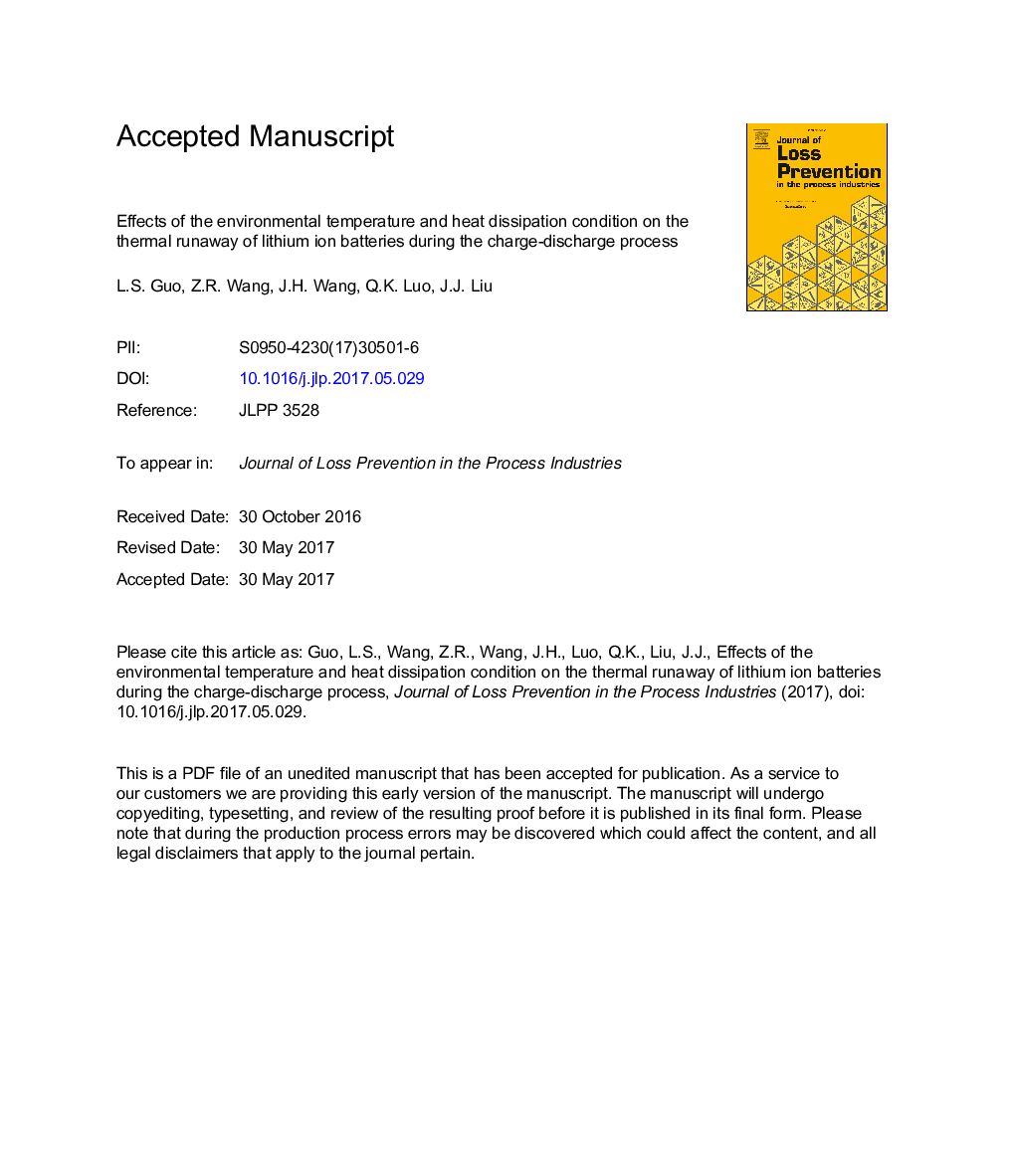| Article ID | Journal | Published Year | Pages | File Type |
|---|---|---|---|---|
| 4980299 | Journal of Loss Prevention in the Process Industries | 2017 | 17 Pages |
Abstract
Fires and explosions due to thermal runaway are the main hazardous characteristics of lithium ion batteries. This paper focuses on the thermal behavior of lithium ion batteries during the charge-discharge process under different environmental temperatures and heat dissipation conditions. An electric heating testing apparatus has been set up to perform a series of experiments with 2600 mAh Sanyo 18,650 batteries. The results show that the critical temperature of thermal runaway is between 40 °C and 60 °C under a 7.8 A charging current. Meanwhile, the average heating rate the of battery rises with the increase of environmental temperature. The initial thermal runaway temperature of batteries under environmental temperatures of 60 °C, 80 °C, and 100 °C is nearly 127 °C. The critical charging current of the thermal runaway also declines with the increase of the environmental temperature. The average heating rate of batteries at 20 °C, 40 °C, and 60 °C are basically equal, but the average heating rate of a battery at 100 °C is higher than that at 80 °C during the discharging process. During the charge-discharge process, a better heat dissipation condition can ensure the lower heating rate of a battery. These results can provide an important basis for the safety design and storage of batteries to prevent fire and explosion accidents.
Related Topics
Physical Sciences and Engineering
Chemical Engineering
Chemical Health and Safety
Authors
L.S. Guo, Z.R. Wang, J.H. Wang, Q.K. Luo, J.J. Liu,
